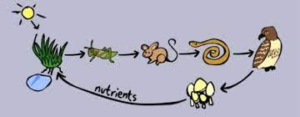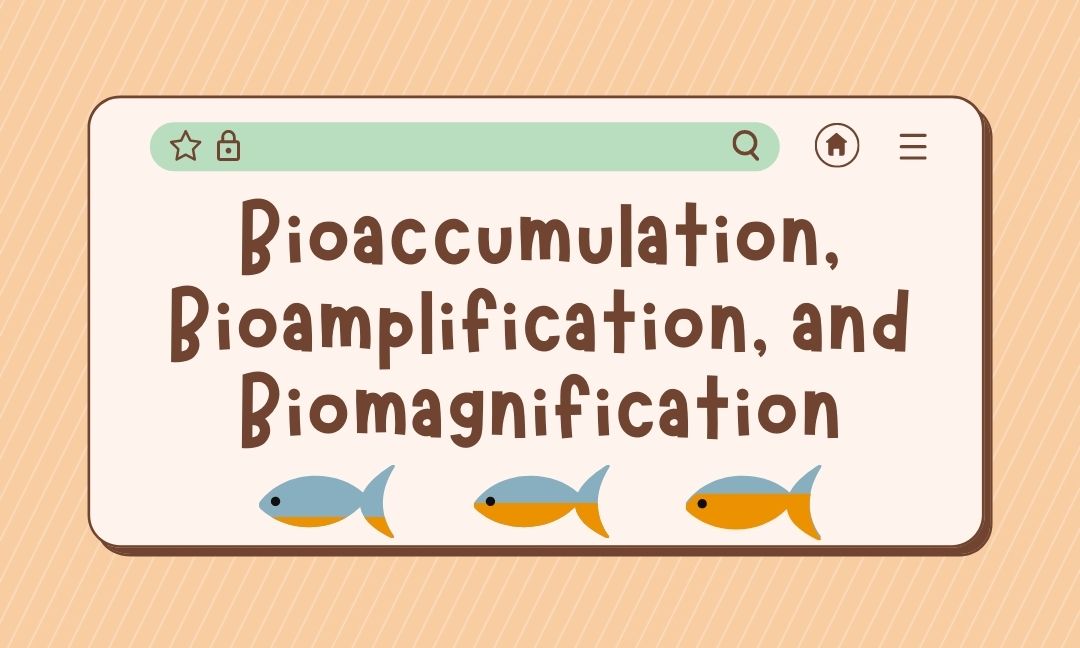Author: Mia T.
Editor: Connor Fraser
Graphic Designer: Emily Sheng
Publisher: Rayna Almas
Hi readers! Today’s blog is about three big words you may or may not have heard in grade 9 science: bioaccumulation, bioamplification, and biomagnification. Told you they’re long! I remember seeing these in my first year of high school and being in complete awe of what was yet to come. They do look sort of intimidating and useless to learn but it may be a cool thing to look more into. Especially if you’re into science, specifically biology/ecology. Trust me when I tell you that I was pretty interested in learning about these ecological terms. Now, I’ll be explaining their definitions, differences, and pertinent information!
Before we start you need to know these things: What’s a food chain? What are pesticides?

As you may know from the basics of elementary science, a food chain is a series of transmissions of energy and mass through the food of an organism to another organism. This you will likely know too- pesticides! It’s a substance that repels, kills, or manages unwanted plant or animal life. FUN FACT: the word pesticide contains the word pest (a destructive organism that attacks crops, food, or livestock) and -cide (denoting an act of killing).
Another thing you need to know when reading this blog is that when the word substance is used, it’s likely referring to pesticides.
Bioaccumulation is the concentration of a substance, such as pesticides, inside the bodies of living organisms. In simpler terms, it’s absorbing more of the chemicals or faster than it is being released. This gradually, over time, creates an internal toxic concentration that can kill the organism. Bioamplification is the accumulation of a substance. The pollutant in question is consistent throughout the chain and isn’t broken down or very moderately condensed over time. This term is often used interchangeably with the term biomagnification, although they are not the same. The latter means, reaching a high concentration level which becomes toxic for the final order (the final animal on the food chain). If an organism consumes another organism that was infected or consumed the pesticide, since it cannot dissolve it would then seep into the fats and oils, which can include organs, in their bodies.
The main takeaway I’d like for you readers to remember consists of 2 main points. (1) Not only is it vital to be familiar with these definitions- as it enriches our knowledge of the relationship between people, nature, and their impacts on one another-, but more applicable to be able to identify the differences between the 3. It is easier to know the definitions than it is to have the expertise to explain why this is such. (2) When you’re in school or just learning things in your daily life, it isn’t bad to explore more. In elementary school science wasn’t very interesting to me, now that I’ve been in high school for a while, I’m glad to say I didn’t give up on trying. Having the opportunity to research more about the environment through this program and in school has opened my eyes to many future options. I’ve begun to explore my abilities and where those can bring me for my potential career paths and post-secondary routes.
Thank you for reading this blog and everyone at WR School Food Gardens and I wish you a great rest of your week. Stay safe and healthy!!
References
https://mercurypolicy.scripts.mit.edu/blog/?p=499#:~:text=Bioamplification%20
https://pubmed.ncbi.nlm.nih.gov/24158581/
https://cliparts.zone/food-chain-cliparts

